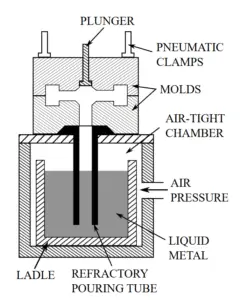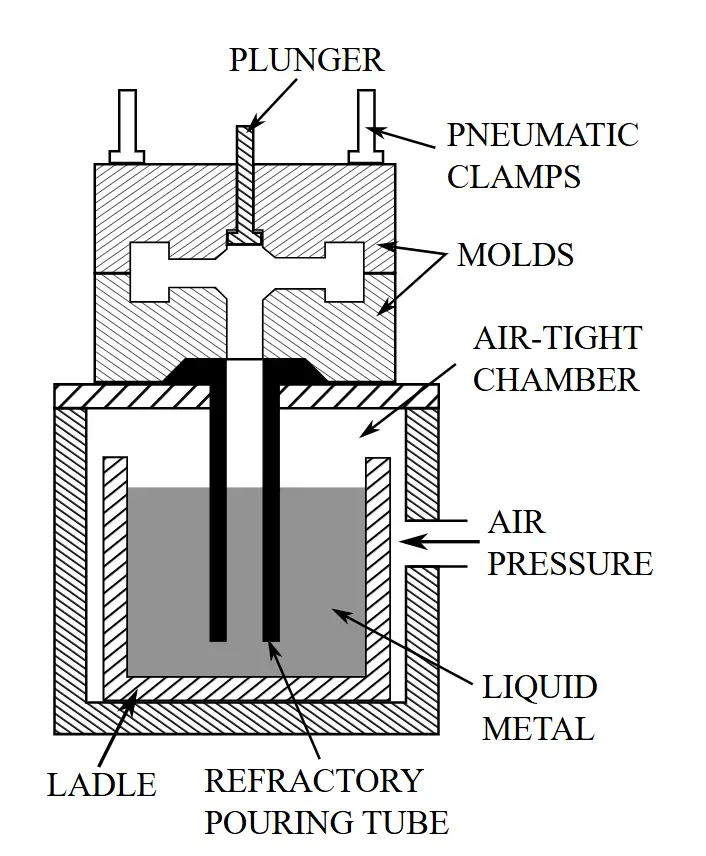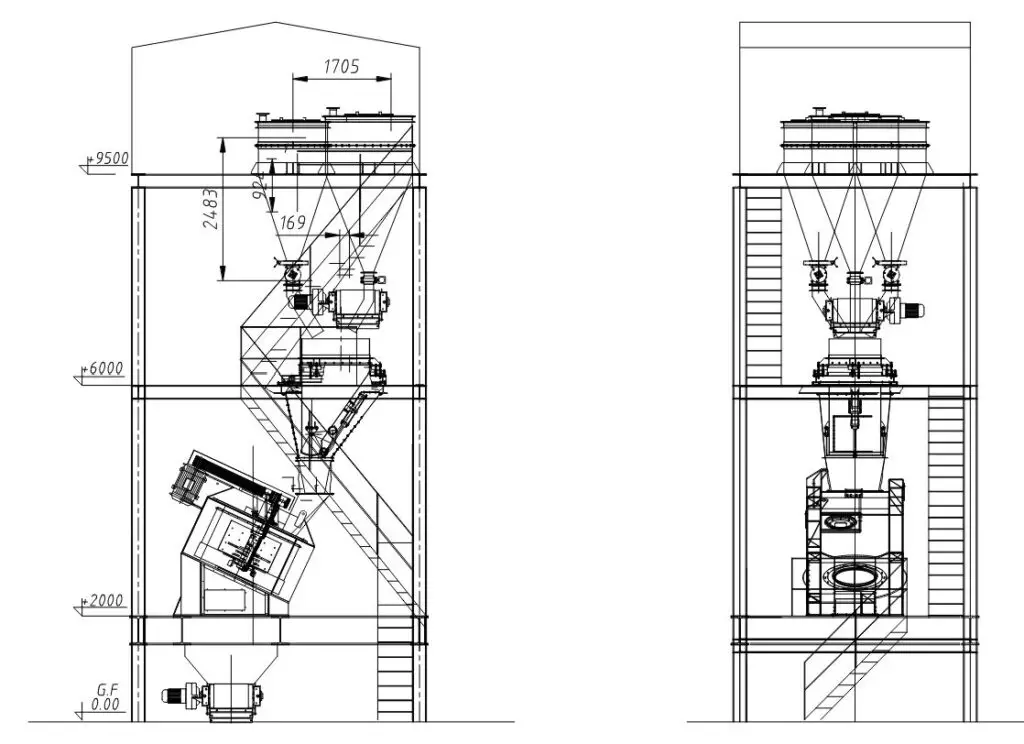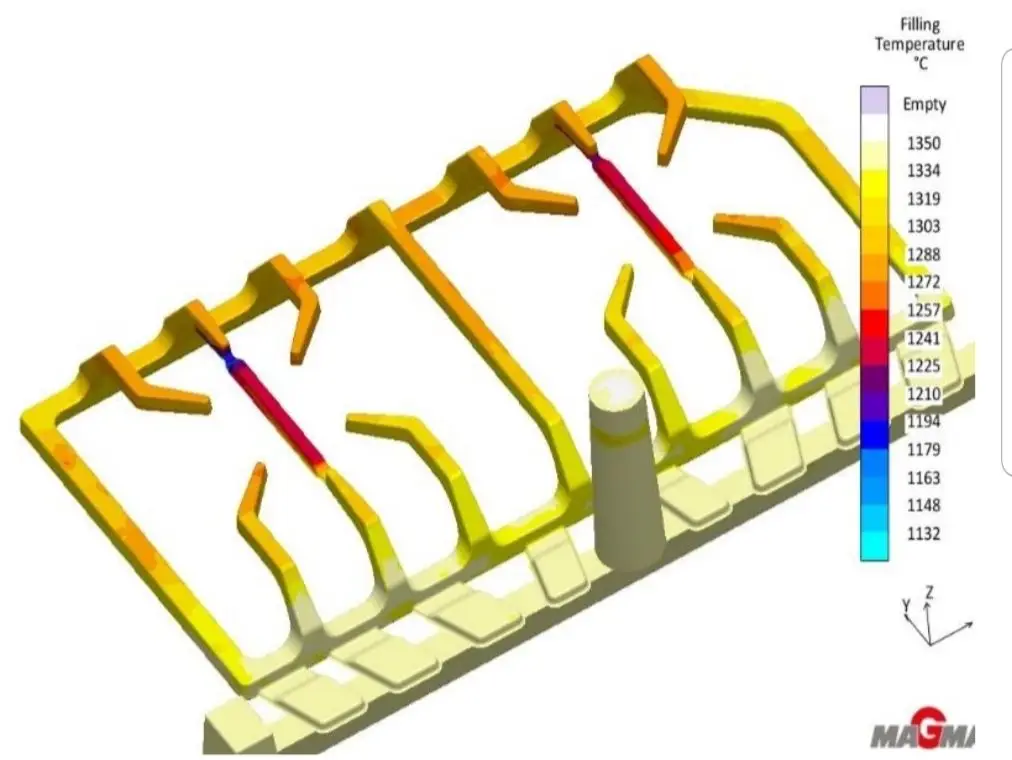The Cylinder Head: Challenges and Solutions in Low Pressure Die Casting (LPDC) of Aluminum Alloys

The cylinder head is one of the most critical components in internal combustion engines, responsible for controlling gas flow, transferring heat, and sealing the combustion chamber. In recent decades, the use of aluminum alloys instead of cast iron for manufacturing cylinder heads has become widespread due to the automotive industry’s need to reduce vehicle weight and improve thermal efficiency.
One of the most commonly used methods for producing aluminum cylinder heads is Low Pressure Die Casting (LPDC). This process uses controlled gas pressure to push the molten metal from a holding furnace into a metallic die. It enables the production of parts with high dimensional accuracy, good surface quality, and a denser structure. However, the defect-free production of these complex components requires strict process control and a deep understanding of potential casting defects.
Common Defects in LPDC Aluminum Cylinder Head Production:
-
Gas Porosity:
Caused by dissolved gases in the melt or air entrapment in the mold. The main sources include moisture, excessive melt turbulence, or rapid metal injection. -
Shrinkage Porosity:
Resulting from non-uniform solidification and inadequate feeding, often appearing in thicker areas and last-to-solidify zones. -
Hot Cracks:
Arise from severe thermal stresses or improper design of part geometry or cooling channels. -
Oxide Inclusions:
Formed when surface oxide layers are drawn into the part due to excessive turbulence or poor melt handling, often appearing as film or ribbon-like defects in the structure. -
Dimensional Distortion (Warping):
Caused by uneven temperature distribution or unbalanced solidification and cooling rates, leading to bending or deformation. -
Reduced Hardness and Mechanical Properties:
Due to the presence of brittle intermetallic phases, chemical segregation, or poor nucleation, resulting in a non-uniform structure and poor machinability.
Contributing Factors:
-
Uncontrolled chemical composition (especially iron, hydrogen, sodium, titanium impurities)
-
Lack of gas and oxide removal from the melt before casting
-
Improper speed and pressure during mold filling
-
Poor mold and gating system design (including venting and feeding)
-
Absence of accurate thermal and flow simulation
Control and Prevention Measures:
-
Use of standard ingots and scrap, and strict control of chemical analysis
-
Melt degassing (with rotary degassing or hexachloroethane) and filtration
-
Gating system design to minimize turbulence and ensure proper venting
-
Application of simulation software (like Magma or ProCAST) to analyze filling and solidification
-
Continuous monitoring of gas pressure, mold temperature, and cycle time
Conclusion:
LPDC is a precise and effective technology for manufacturing aluminum cylinder heads, but given the complexity of the part and high-quality requirements, an in-depth understanding of the process, scientific control of parameters, and proactive defect management are essential.
If you are facing challenges in the production or quality control of aluminum cylinder heads manufactured via LPDC, contact our experts at ARAD FOUNDRY ANALYSIS. Our technical team is ready to provide specialized consulting and practical solutions tailored to your needs.




